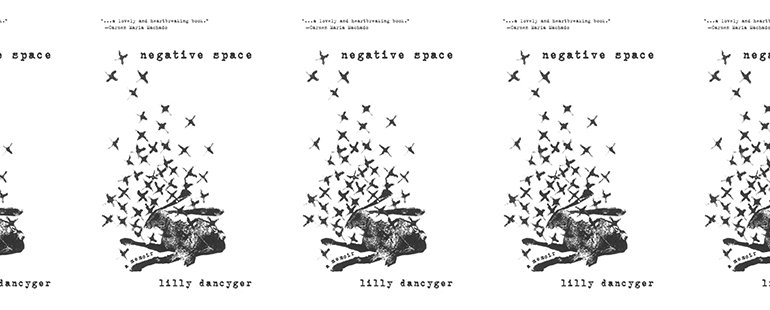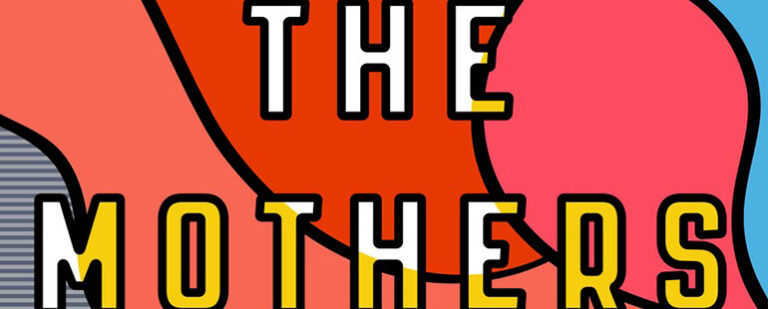“All memoirists are the narrator and the character at once”: An Interview with Lilly Dancyger

Loss is the core of Negative Space, Lilly Dancyger’s just-released mixed media memoir. The death of her father, artist Joe Schactman, blindsided her as a preteen, and her book uses Schactman’s art alongside Dancyger’s memories and reportage to explore, but never exorcise, her grief. This grief is raw and undiluted by the passage of time. In Negative Space’s narrator, it’s easy to recognize the “dry and brittle” voice of her child self, who insisted in the face of adult disbelief her father couldn’t have died of an overdose. As an adult, Dancyger may have come to terms with Schactman’s struggles with heroin addiction, but what she cannot let go of is an acute sense of the injustice of his death. There is no moment of epiphany or acceptance. The book rejects traditional expectations of closure, instead confidently examining the dual nature of parent-child relationships, creative legacy, and artistic creation as an act of communion.
Dancyger doesn’t shy away from acknowledging her childhood short-sightedness and selfishness, showing how her adoration of her father, before and after his death, led her to cast her mother, Heidi, in the role of the villain. Although she did struggle with resentment and anger towards Schactman, Heidi bore the brunt of her daughter’s hurt over their divorce. As she admits, “All the hardness I’ve felt toward her. . . started with my parents splitting up.” From Dancyger’s point of view “it was her decision to end our family.” Plumbing the depths of Schactman’s life and his relationship with Heidi gives her a deeper understanding of his flaws and her mother’s strength, but these discoveries don’t prompt feelings of betrayal. In fact, the very act of examining Schactman’s history is one of the factors that helps Dancyger extend grace to Heidi, the person who has “by far the most to tell me about who my father really was.” Discovering the complex and messily human side of him leads not to disillusionment, but a truer and more forgiving evaluation of their entire family.
This push-pull between the black-and-white world of Dancyger’s childhood and the more mature love and understanding she goes in search of spurs Negative Space’s exploration of Schactman’s life and work, and allows her to also take part in his artistic legacy. The text is punctuated with photos of his arresting art, constructed with everything from woodcuts to shards of glass and animal bones. Realizing that many of the images that dominated Schactman’s works crop up again and again in her own writing, Dancyger experiences a moment of clarity at a writer’s workshop, understanding that these images are “mine. . . to make my own meaning out of.” At this moment, the reader’s view shifts with Dancyger, realizing that Negative Space is more than a memoir of a father and a daughter. It’s also a memoir of two artists, forever separated, and the history and symbols that provide an artistic shorthand able to move past the boundaries of shared experiences and meet again.
Claudia McCarron: Negative Space took over a decade to complete. How did your writing process start out? How did it change during that time?
Lilly Dancyger: The book itself changed pretty completely. I guess my process did too. I started it when I was twenty years old; I was in college. The first full draft of it was actually my undergraduate thesis, so I was writing in this externally imposed structure, with deadlines and working with an advisor who wanted me to complete chunks on a specific timeline. Then when I graduated, I took a little break to go to grad school, and [when] I came back to the project, I was on my own—trying to be a writer in the world; dealing with all the difficulties of self-motivation. It was during the process of writing this book that I really learned how to become a writer, and found my own voice and my own routine and my process. All of that evolved alongside the book.
In the beginning, the project was an artist monograph. Over the course of that decade, it slowly became memoir as well. The focus and even the genre of the whole thing changed over the course of revision and learning how to tell it in a way readers would be invested in it. I as Joe Schactman’s daughter would be interested in a book of his art that was just his life story, but readers need more of a foothold, a reason to care. I realized along the way that I was that reason, and that the process of uncovering his story was what readers were latching onto most.
CM: Negative Space is a mixed-media memoir, and you write a bit about how that was a hard sell when you were looking for a publisher. Can you talk about art’s importance to the finished project and why that was something you weren’t willing to compromise on or remove?
LD: As much it became a memoir, it also is still an art book. I never gave up that aspect of the project; it just evolved and expanded. That is so much at the core of what this book is and what motivated me to write it. It’s a book about a lot of different things, but at the heart of it, it’s a book about art. It never would have made sense to me to write a book about art without including the art.
CM: Instead of relying on a traditional, linear plot arc, Negative Space back-tracks, revisits, and layers the past and the future obsessively. Is there a narrative pattern you see the memoir taking? What was the process of finding a structure that worked for you and for this book?
LD: Structure was really hard to nail down. There is a pattern, but I wanted it to appear seamless. I wanted it to all flow together in a way where you’re getting the information you need in the moment you need it and you’re being pulled along so that you’re not paying so much attention to how and when and why you’re switching. It is braided, basically. There are three storylines—my father’s storyline, my story after his death, and the story of me as the researcher piecing together and reflecting. Most of the chapters contain all three of those braided together. I started with a more regimented, traditional braided structure, and then I broke it up into smaller pieces and smoothed the edges of the weave so it could all flow together.
CM: You drew inspiration from Lidia Yuknavitch’s writing and workshops. Yuknavitch classifies her 2010 book The Chronology of Water as an “anti-memoir” that “broke all the rules of memoir writing” and “broke off and did all sorts of inconsistent things.” How does Negative Space fit into and expand the landscape of the anti-memoir?
LD: I think that non-linearity is part of it. Also, one of the “rules” that I break in the book is talking about the writing of the book while I’m writing it. That doesn’t always work. In this case, it did feel necessary as part of the story, and the story birthing itself. It’s part of that spiral structure where the process of figuring out how I was telling the story was also the process of understanding the information that I was collecting. If that collecting information was part of the story, then so was figuring out how to transmit it. All memoirists are the narrator and the character at once—I leaned into that and made the narrator a more developed character than is often done by making this research part of the story itself.
CM: Negative Space complicates the traditional expectations we have for closure. Was it important to you to resist the narrative that grief is something people eventually overcome?
LD: It was important for me to tell the story truthfully, so that inherently meant leaving the grieving open-ended and messy. That’s the reality of my life. My father’s been dead for almost twenty-one years and I still feel grief and I still think it’s unfair, and I think that’s going to be true forever. I didn’t really think consciously about how I was going to address that early on. When it became a memoir, I realized partly through, “Well crap, how do I end this?” There’s no ending, no resolution, no arrival point where everything is better. I was stumped by that for a little while. Then it became about trying to find a way to end it in some satisfying way without pretending to have reached some point of closure that I don’t think exists.
CM: Your father, Joe, is a complex character—a dedicated artist, devoted father, and also someone who is destructive, and dealing with substance use disorder. How did you develop his character while you were writing? What part of his personality was the most difficult to capture?
LD: I don’t think there was one aspect that was the primary focus or the hardest. My focus was always trying to strike that balance, and trying to find ways to encompass all those aspects. On one draft, I would read it and feel like I leaned too hard into the destructive, dark side and I’d go back in and add some happy, sweet memories. In another draft, I would feel like I had overcorrected—maybe now it’s too rosy and I’m trying too hard to make it sound positive and sunny and I need to add a little more of the ugly, dark honesty. Early on, I realized I hadn’t quite captured his humor yet. It was always trying to get the balance right. It’s very much like painting in that way, I think—you go back in, adding more of this and then more of that until the balance is right.
CM: What’s next for you? Are they any other any projects that you’re excited about?
LD: I am working on a new book proposal, but I’m not going to say what it’s about yet. We’re in the embryonic stages. Right now, I really am just focusing on giving Negative Space the best launch that I can. After working on it for so long, I just want to put as much energy as I can into getting it out into the world and getting it out to readers.


